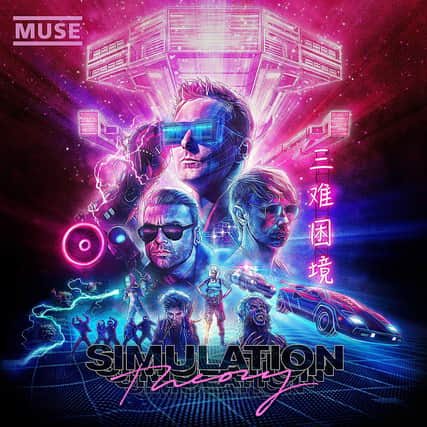ALBUM REVIEW: Simulation Theory by Muse


MUSE have never conformed to the stereotypes of modern popular music — in fact they have a rather unique style of rock which seems to be influenced by politics and a dystopian view of the future.
They have never been afraid to be outlandish and have been accused by some of being over-the-top and dramatic — but that’s what exactly what has made them a success.
Advertisement
Hide AdAdvertisement
Hide AdTheir eight album, Simulation Theory, has a 1980s futuristic vibe reminiscent of cult films from the era, such as Tron or Back to the Future, which is evident in the cover art and music videos released alongside the album.
It’s a departure from their recent, darker releases, but it’s very “Muse” and is certain to go down well with their legion of fans.
The release has an electronic feel and is heavy on the use of the synthesiser, evidenced in its powerful opening track, Algorithm, which builds in a satisfying crescendo, setting you up for the rest of the album.
We hear more of Matt Bellamy’s unique, melancholic vocals in The Dark Side, which features the lyrics “Break me out/ break me out/ set me free” and is reminiscent of Queen’s I Want to Break Free in terms of lyrics, rhythm and style.
Advertisement
Hide AdAdvertisement
Hide AdIndeed, the band takes many influences from Queen, and the following track, Pressure (a nod to Under Pressure, perhaps?) has a funky, more upbeat sound.
The album takes a more experimental turn with Break it To Me, while Something Human has pleasing synth sound effects and harmonic vocals which only Muse seem capable of blending together so effectively.
Get Up and Fight is a rousing anthem with a fist-pumping chorus and, in Blockades, we hear more of the same, with Bellamy and his bandmates chanting “Crush, crush/ Where's the rush?/ Seize, fight for your life”, setting listeners up for a strong finish to the album.
The album also sees Muse move away from classical influences, having dabbled with the genre in their 2009 release The Resistance, which featured a three-part symphony.
Instead they return to what they know best — a unique brand of synth rock with a brash and uncompromising style which is evident in the album's penultimate track, Dig Down.